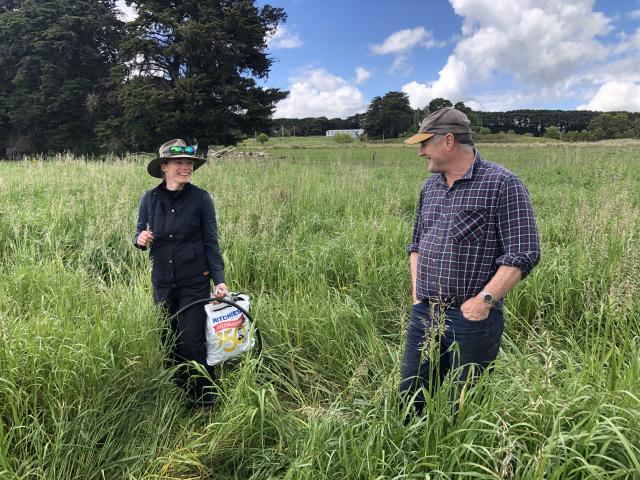
A cultivation calculator, believed to be an Australian first, has been developed to help farmers assess how much cultivation work they need to make better pastures.
The calculator has emerged as one of the positive outcomes from the Increasing Soil Carbon and Climate Resilient Farms projects coordinated by Heytesbury District Landcare Network (HDLN).
The projects also found that multispecies pastures can have a huge benefit in late spring and summer.
The projects have included trials based on regenerative agriculture practices to demonstrate how increasing soil biology and adopting minimum or appropriate tillage methods and changing from monoculture pasture species to multispecies can improve soil, animal, pasture and human health.
The cultivation calculator was developed by project team members Healthy Farming Systems cover crop advisor Jade Killoran and regenerative farming advisor and partner in Camperdown Compost, Tony Evans.
Ms Killoran said the calculator came about as a response to sowing trials across 20 farms in the project, particularly after noticing spring minimal tillage machines and direct drilling producing unsuccessful results compared to more aggressive cultivation.
The calculator has four categories; time of sowing, previous paddock preparation, previous pastures or crops within the past six months, and soil type. Farmers can score each of the categories and their total score suggests a cultivation method to increase the likelihood of success for future sowings.
Ms Killoran said it aimed to make decisions easier for farmers and to make sowing more successful for multispecies crops or any sowing operation.
“It’s an easy-to-use tool and the categories are quite broad but it helps farmers to place their paddock in a scenario and make it easier to plan whether to do light, medium or heavy cultivation.
“It takes some of the guess work out of sowing a multispecies or any type of crop or pasture.”
Ms Killoran said the Increasing Soil Carbon and Climate Resilient Farms projects showed that farms in the Western District have winter-dominant rainfall and can grow autumn and winter pastures into spring very successfully, but the pasture becomes dormant in late spring and summer.
“We found that’s where the multispecies had a fantastic impact with producing feed later in the season and the dual benefit of keeping the ground covered and protected for soil health.
“From a production viewpoint, sowing multispecies in spring to boost late spring and summer production was where it was really successful.”
Ms Killoran said the trials produced very high-quality feed.
“Because of the mix, the animal has the ability to self-regulate their diet and the mix gives energy, protein and fibre at various times of the season.”
Ms Killoran said there was a huge upsurge in interest in multispecies pastures and she expects it will be taken up by more farmers in the next 5-10 years.
“It’s a space worth watching,” she said.
HDLN Landcare coordinator Geoff Rollinson said the trials had assessed the impact of different additives and cultivation methods on multispecies pastures.
“Jade and Tony noticed great variation in the condition and history of paddocks to establish those trials so they came up with a spreadsheet-based calculator looking at the variables to help farmers to decide what level of tillage is required to prepare a paddock for a crop or pasture,” Mr Rollinson said.
“It will give farmers a guide to the best possible chance of success with establishing a pasture. It might take two or three years to establish a successful multispecies pasture unless you take account of the variability of the paddocks you’re working with. They tested the calculator against actual observations and it stood up to those assessments.”
The calculator is available for free from the HDLN website heytesburylandcare.org.au
The projects were supported by the Lord Mayor’s Charitable Foundation, Australian Government, Deakin University, Camperdown Compost, Focus, Corangamite Shire, Corangamite CMA, Healthy Farming Systems, Triple R Biochar and Beach Energy.






